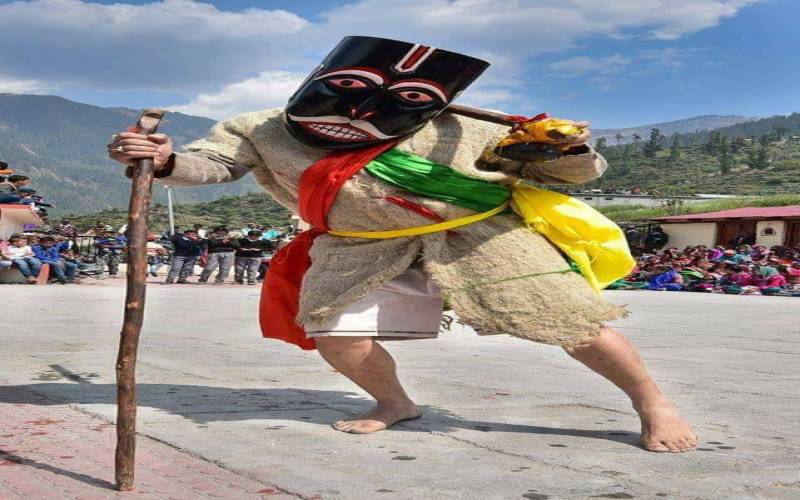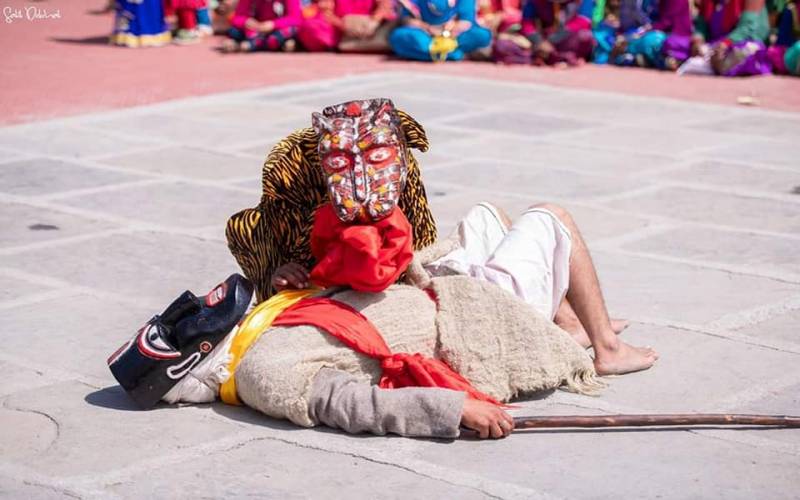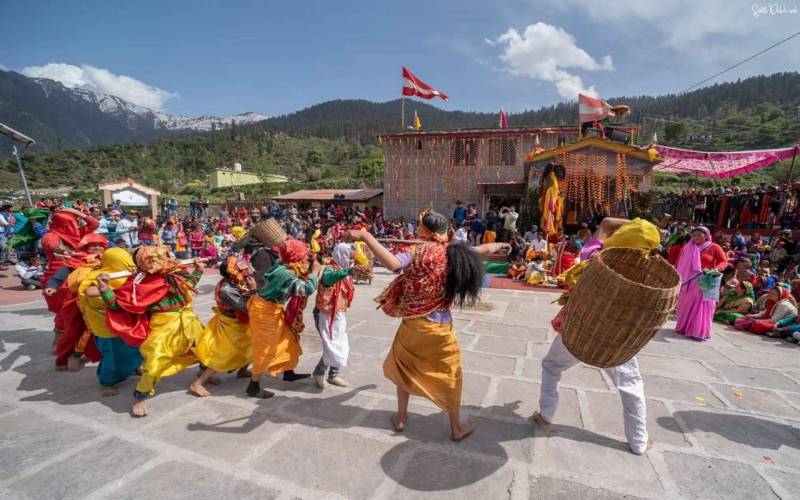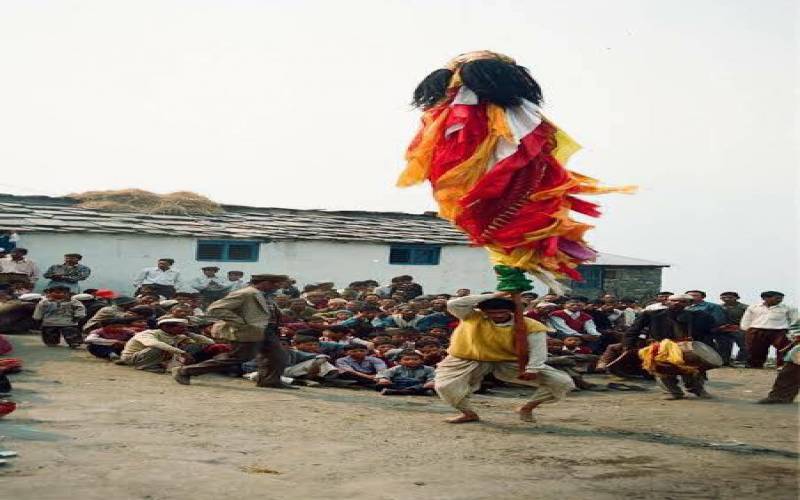Ramman Festival, Uttarakhand
Ramman is a religious festival featuring the theater that is listed among India's Intangible Cultural Heritage. Saloor-Dungra is a twin village located in Chamoli district in the Garhwal Region of Uttarakhand where this festival is celebrated exclusively.
In ancient times, the Ramman Festival was important in local lore, but its origins are not known. As the festival generally revolves around paying respect to the gods of Saloor Dungra, the Bhumi-Chetrapal, or Bhumiyal Devta, the festival has a traditional motive. Each village priest decides the date. As the name Ramman implies, the festival is associated with the Hindu epic Ramayana. During the epic retelling, participants sing and dance masked while they display different aspects of village life. In the quaint villages without thinking about caste and creed, the unique festivals are an important form of the heritage of only 196 families. The Ramman festival is unique in the sense that every resident participates without distinction based on faith, race, or status.
The performance features 18 performers with 18 characters wearing 18 masks and dancing to 18 beats to honor the 18 Puranas. At Bhumiya Devta temple in Saloor Village, ritual performances are held in the courtyard. The deity stays at the home of one of the village families after the procession and festivities, which are decided by the village panchayat. Lord Ganesha is called "Vighnaharta”, the demolisher of obstacles, to begin the festival. In addition to the local deity, Bhumiya Devta (locally known as Nar Singh Devta) is offered prayers. Afterward, ritual plays are held after the offerings have been accepted by the deities.
The main highlight of the Ramman festival is the singing of ‘Jagar’, a musical compilation of local legends. The participants performed dances wearing masks and telling stories from Ramayana and other Hindu texts as well as local folk tales. Traditional performances do not only appeal to deities but also serve as a celebration by village residents to mark the end of the spring and the beginning of the harvest. It's a way to bring people together while sharing their histories and heritage.



